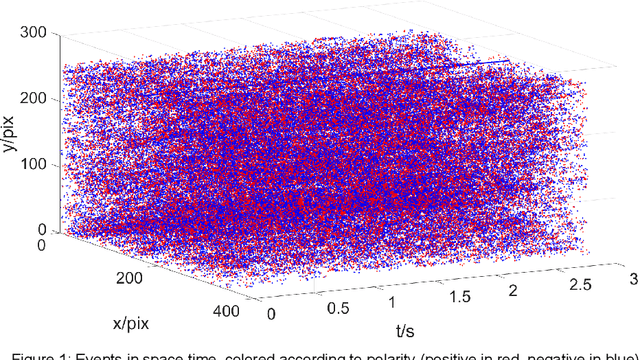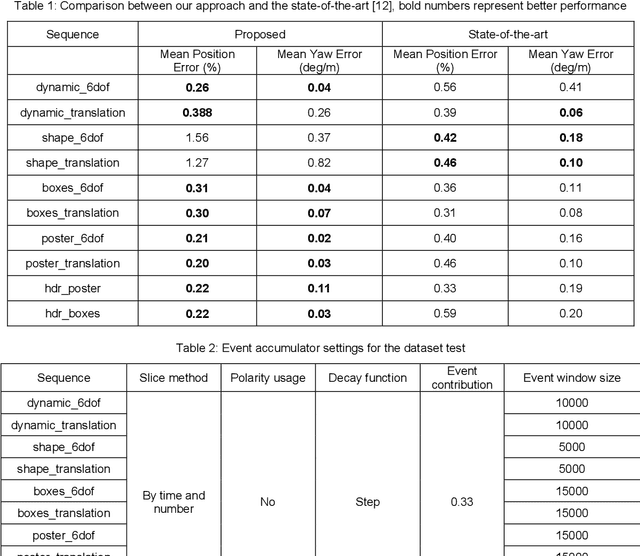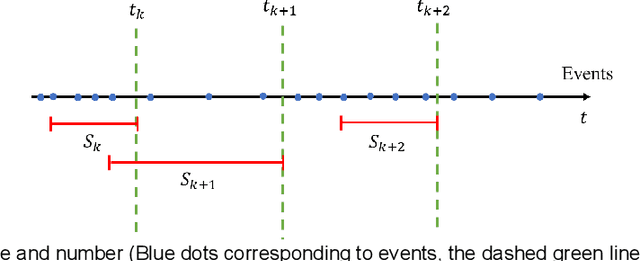Research on Event Accumulator Settings for Event-Based SLAM
Paper and Code
Dec 01, 2021



Event cameras are a new type of sensors that are different from traditional cameras. Each pixel is triggered asynchronously by event. The trigger event is the change of the brightness irradiated on the pixel. If the increment or decrement of brightness is higher than a certain threshold, an event is output. Compared with traditional cameras, event cameras have the advantages of high dynamic range and no motion blur. Accumulating events to frames and using traditional SLAM algorithm is a direct and efficient way for event-based SLAM. Different event accumulator settings, such as slice method of event stream, processing method for no motion, using polarity or not, decay function and event contribution, can cause quite different accumulating results. We conducted the research on how to accumulate event frames to achieve a better event-based SLAM performance. For experiment verification, accumulated event frames are fed to the traditional SLAM system to construct an event-based SLAM system. Our strategy of setting event accumulator has been evaluated on the public dataset. The experiment results show that our method can achieve better performance in most sequences compared with the state-of-the-art event frame based SLAM algorithm. In addition, the proposed approach has been tested on a quadrotor UAV to show the potential of applications in real scenario. Code and results are open sourced to benefit the research community of event cameras
 Add to Chrome
Add to Chrome Add to Firefox
Add to Firefox Add to Edge
Add to Edge